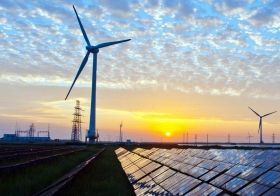Wind and solar power could generate most but not all electricity in the United States, according to an analysis of 36 years of weather data by Carnegie’s Ken Caldeira, and three Carnegie-affiliated energy experts: Matthew Shaner, Steven Davis (of University of California Irvine), and Nathan Lewis (of Caltech).
Wind and solar power could generate most but not all electricity in the United States, according to an analysis of 36 years of weather data by Carnegie’s Ken Caldeira, and three Carnegie-affiliated energy experts: Matthew Shaner, Steven Davis (of University of California Irvine), and Nathan Lewis (of Caltech).
Right now, about 38 percent of carbon dioxide emissions come from electricity production, which must be reduced to combat climate change.
The team found that as the amount of electricity produced by solar and wind increases, avoiding major blackouts becomes increasingly challenging. Policymakers and planners need to consider that wind and solar resources will have natural variability, the team said.
“Our team took a simplified approach aimed at understanding fundamental geophysical constraints on wind and solar power,” explained lead author Shaner. “We looked at solar and wind power availability on an hourly basis across the U.S. and determined how much of current electricity demand could be met by varying amounts of solar panels, wind turbines, and energy storage, in addition to changes in the electricity grid.”
Read more at Carnegie Institution for Science
Photo Credit: Kenueone via Wikimedia Commons




